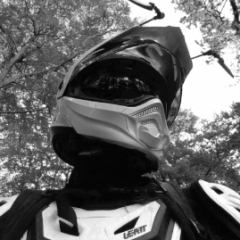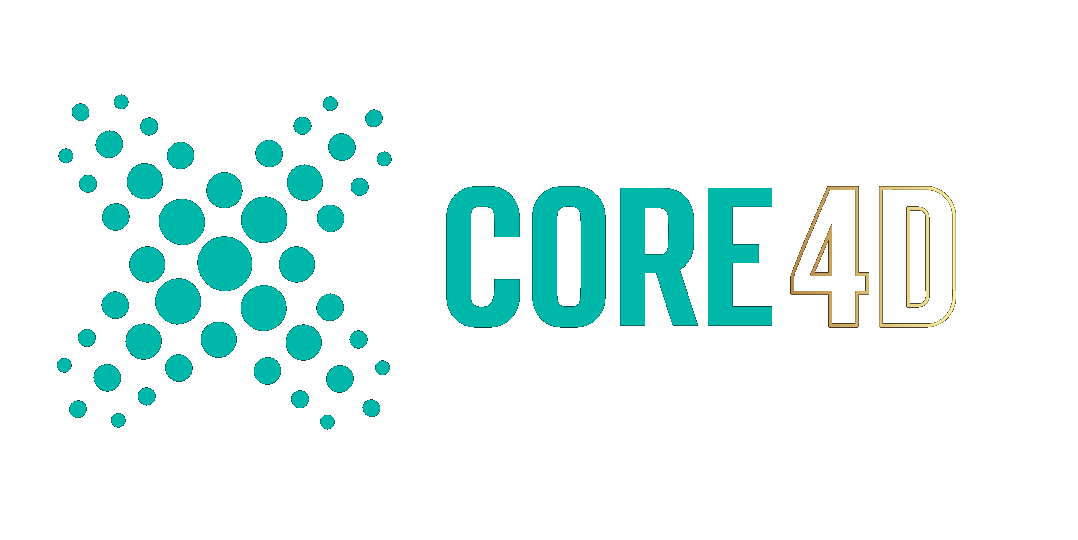-
Posts
17,957 -
Joined
-
Days Won
733
Content Type
Profiles
Blogs
Forums
Gallery
Pipeline Tools
3D Wiki
Plugin List
Store
Downloads
Everything posted by Cerbera
-
Additionally, I am not sure whatever tutorial you are following is giving you great advice ! This sort of form does not come out well when made like this because cylindrical forms with a lot of counter-flow topology do not surface nicely under subdivision, and yours is no exception - it looks lumpy and unattractive, because this isn't the right technique to make this sort of thing. What you do instead for a flawless and beautiful result is to model the object as if it were unwrapped (so flat), then use deformers to wrap that, or more ideally its parent SDS object into a cylindrical form. That way we get an entirely lump-free surface when we render. You should also be aware that complex poles (points where more than 5 edges meet) will cause problems with subdivision, so ideally you would avoid creating them as you modelled... CBR
-
Also your SDS mode is wrong - that should be Catmull Clark. OpenSubDiv Bilinear will not do the smoothing you need - it is more of a tesselation setting. CBR
-
It looks like you have forgotten to tick create caps when you used the extrude tool. There is no reason you shouldn't be able to create thickness on all this at once by going to Poly Mode, selecting all polys, then doing the Extrude. However that won't work if there are other problems in your mesh, and there are... This mesh has not been optimised to join all its points so it exists as multiple polygon islands within a single object, which is not helpful for adding thickness, because it will do it individually per island. So you need to optimize your mesh (points mode, select all / optimize with suitable threshold) to make it suitable for adding thickness to. CBR
-
Er... why aren't we using the amazing cloth sim in C4D 2023 for this ?! However, we need to be a more careful about polygons to do cloth simulation than we do sculpting in ZBrush, so you need to model clothes that have a very even, clean all-quad topology just outside the body mesh, then use the latter as a collider for the clothes, and belt or pin areas of your cloth to it so that when you play the simulation it all drapes down like clothing would. I will just say - I can't see your character's topology in that screenshot, but I suspect coming from Zbrush that it may contain millions of polys. If that is the case, that will make it unsuitable for use even as a collider, because simulation stuff is very much about polygon density, and calculating the collisions of 10s of millions of polys is a sure-fire way to grind your computer into freeze-land. So consider making, or exporting from Zbrush, a low poly proxy object you can use for simulation. Z-Remesher will probably be instrumental to this endeavour, so you have choices about which app you do it in... Cinema seems easier if that's where you're doing the sim. CBR
-
Generally, nobody bothers trying to make condensation curve around the can in those tutorials - they just intersect the drops, which doesn't usually matter if the can is solid. With a leaf it's a bit different of course, and this presents something of an issue in C4D because it is quite hard to get natural looking trailing water without any sort of simulation help. Bizarrely enough I think the rolling droplets might be best handled with our new soft body cloth sim in 2023, possibly using a volume builder setup, or even metaballs to merge droplets as they cross paths etc. I think that might be the closest you can get to macro trailing water drops without recourse to Realflow or similar. CBR
-
You cannot select it because you haven't made it yet ! There is only a guide spline overlaid on the model but you haven't actually made the cuts into the original object. CBR
-
Alas I am busy most of the weekend, but will try and help with this when I get some time. The baking workflow in Cinema does need some rather specific settings and experimentation to get the best results out of, and I too am keen to find out what they are, and which bits, if any, are broken and need further reporting !! I hardly ever need baking in my day-to-day work which is why I haven't got this nailed down already, but to those that need it is it very important that our workflow here can produce serviceable results. CBR
-
Nice how a little bit of comp'd foliage so nicely frames and contextualises it - lovely work 🙂 If I had one small criticism it might be that the purple flowers look too uniform in colour, and the sky is a bit...undramatic, which might be what you want ! CBR
-
I've still got the 3D glasses 🙂 CBR
-
Well, there's 'polygon islands to objects' (previously called something slightly different to that, which currently escapes me), which will sort it all out in one go based on islands within a single object, but we can't get that to do it by tags as far as I am aware... CBR
-
Oh yes, there is that too !! 🙂 sometimes you forget to say the most obvious thing ! CBR
-
Yeah you need to figure that out on your mates machine, cos I don't think Cinema can deal with importing the native files. It should be as simple as File / Export textures !!! CBR
-
Well I have a perma-license of Subtance Painter via Steam, and that allows me to export all my maps directly from it to a nice neat folder ! Kinda curious as to why your version doesn't offer that option... which version is it ? CBR
-
I think we've always done that manually haven't we ?! Export the images from substance, then hook them up with new materials in the nodes of whatever renderer we are using ? I don't use it much, and am hardly an expert, but every tutorial I have ever seen says import the maps manually ! CBR
-
Oh very nice - proper evil jester ! 🙂 CBR
-
Yes that is very nice. I thought we were heading in that sort of general direction a while back with Physical Render and its cloth-specific reflectance model, but we haven't had anything similar since then. I agree we should have an equivalent in RS. CBR
-
That'll be the non-manifold edges in the model preventing that. Turn on mesh checker and you'll see all the red errors there... CBR
-
Look for this icon in the top toolbar, then use regular scale tool... CBR
-

Where to find realistic HDR Space textures from the universe?
Cerbera replied to Nkzmi Dev's topic in Discussions
HDR images are not, generally speaking either small size or optimised for web use ! And high quality ones simply have to be massive ! But bandwidths can usually cope with that and of course they can be optimised like any other image. The issue is how much they can be optimised without losing all that tiny starry detail... I can't believe NASA hasn't got some HDRI action going on - have you checked out their archives yet ? CBR -
That 2 dimensionality shouldn't matter as Bullet system can deal with it, and even use it for aerodynamics if you tick the '2-sided' button therein. We should probably also mention Voronoi Fracture if you want solid chunks of object rather than flat pieces based on polygons. CBR
- 4 replies
-
1
-
- Simulation
- MoGraph
-
(and 1 more)
Tagged with:
-
Please complete your profile so we know which version you are working with... 4 main stages to this: 1. Make sure the object you want to explode has loads of segments, then use Explosion deformer set to 0.001 strength to separate the polygons, and Current State to Object that and save the original in case you want to do a 1 frame visibility swap-out using it. 2. Put that new object into Fracture, set its mode to Explode Segments, and give it a Bullet (rigid body) dynamics tag with a collision mode of moving mesh. Pop to Project settings / dynamics and turn gravity down to zero. 3. Add Bullet Collider tag to the surrounding object and set its collision mode to static mesh. 4. Now, when you press play the segments in that object will react to whatever forces you throw at them. Use a positive attractor to suck them offstage and a negative one at object centre to explode them. Optionally add Turbulence or Wind forces. Animate the strength of those forces with keyframes throughout the animation to control things as you need... CBR
- 4 replies
-
3
-
- Simulation
- MoGraph
-
(and 1 more)
Tagged with:
-
Thanks HP, but that's not what I meant. I wondered how we would go about creating an original image in photoshop that would produce cool wrinkles when converted to Normal map. Or would it have to be photographically based ? CBR

